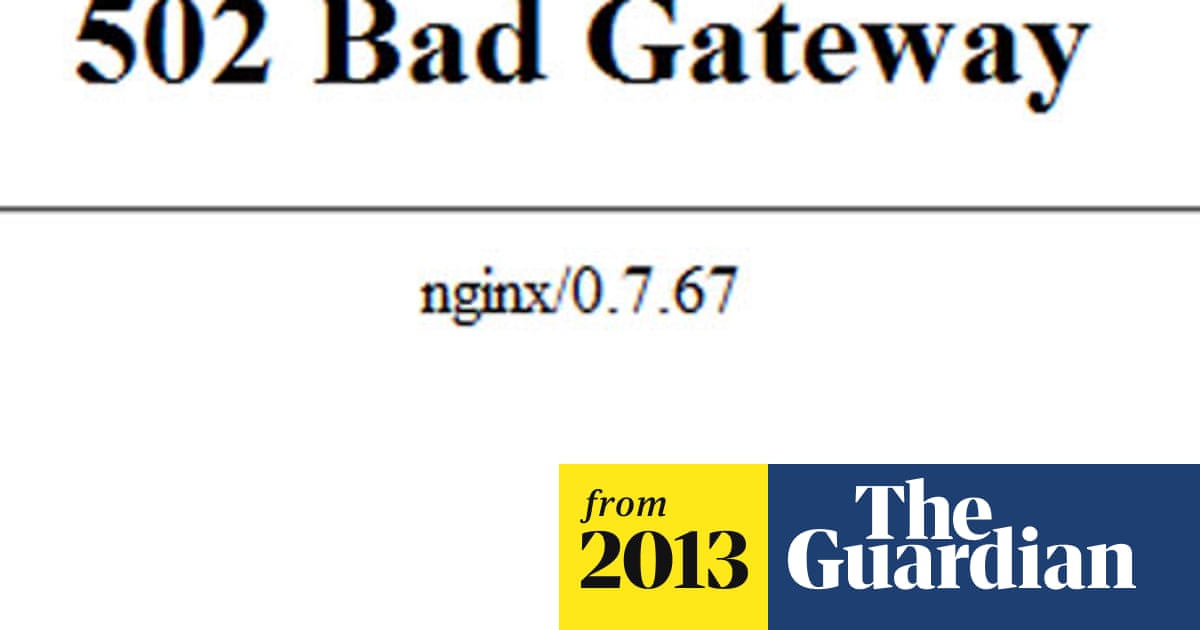I keep getting an error message, 502 Bad Gateway nginx/0.7.67, when I try to access the Freecycle site. I have rebooted my PC and used ‘system restore’ several times, but haven’t been able to clear it. Do you know how to sort this out?
Viv
The ‘Bad Gateway’ error is coming from the server, and usually has nothing to do with your PC. It may just be that the site is overloaded. Often, simply refreshing or reloading the page (Ctrl-F5) will work, but sometimes the problem can persist for days. If so, you could log the time(s) and browser version and submit an error report to the webmaster, because 502 errors can be caused by bugs in the associated PHP programming. In this case, email the admin team at myfreecycleadmin@freecycle.org. If it’s an intermittent fault, the simplest option is to wait for 10 minutes and then try again.
There are a few things that you can do to try to get through to a site when you get a 502 Bad Gateway error. It’s hard to know whether they actually work. It might be that doing them is simply introducing a delay and the site would have worked if you hadn’t bothered. Either way, it’s useful to have a few things to try when you can’t get through to any website.
One of the first things I do when a site isn’t responding is to paste its web address or URL (Uniform Resource Locator) into the box at Down for everyone or just me? This will check the site and tell you if it has crashed, in which case, nobody else can get through either. In some cases, you might still be able to get the information you need, either by using the version cached by a search engine such as Google (click the down-arrow next to the web address), or by using a copy of the site archived at the Wayback Machine.
This time, we know the Freecycle site is working, because it’s running Nginx (pronounced Engine-X) version 0.7.67 software. This is a reverse proxy server program that (among other things) accepts incoming requests from web browsers and directs them to a number of different back-end computers – the file servers that store the data for the site. The problem is that Nginx is passing on your browser’s request and not getting an acceptable answer in the time allowed.
To quote the definition of 502 Bad Gateway from Wikipedia: "The server was acting as a gateway or proxy and received an invalid response from the upstream server." There are many other 5xx server error messages, all of which boil down to: "The server failed to fulfill an apparently valid request." They don’t tell you much about the real source of the problem.
The second thing to try is a different browser. There are plenty to choose from, and there’s no reason why you can’t run two at a time. At the moment, I’m running Mozilla Firefox 22 and Microsoft’s Internet Explorer 10 on Windows 7. If a site doesn’t work or looks broken in one browser, it only takes a second or two to paste the address into the other.
The third thing to try is a web-based proxy server. This is an indirect way of reaching a website. Instead of going straight to freecycle.org, go to it via another site such as Anonymouse.org or Hide My Ass! This disguises your origins and eliminates some potential problems with your own internet service provider. (Anonymous proxies provide a simple way to reach sites that your ISP has blocked, or get a response from servers that will only answer requests from certain countries.)
The fourth thing to try is to empty the cache of pages kept by each of your web browsers. Browsers like to store copies of web pages in temporary file folders as it is faster to load cached pages than fetch them again, assuming they haven’t changed. This shouldn’t be a problem after trying Ctrl-F5, but some people have claimed that it helps.
Finally, there’s the PC-industry panacea of rebooting the machine, which didn’t work in your case. The equivalent web-industry panacea is rebooting the router (aka modem, or internet hub). To do this, unplug the mains lead from the back, wait 30 seconds, then plug it back in. This forces the router to establish a new broadband connection.
One approach I’ve left out is to use a website’s IP (internet protocol) address instead of its URL. The internet uses a DNS (domain name system) to convert between human-friendly web addresses and machine-friendly IP addresses, but you can always try going to http://88.198.219.196 instead of http://www.freecycle.org/. This gets round the problem of DNS errors – where your ISP tells you it can’t find a website – but it’s mainly used to circumvent DNS-based web censorship. There are dozens of simple converters, such as DNS2IP.
The ultimate answer to dealing with a website that doesn’t work properly is to go somewhere else. In Freecycle’s case, there’s an alternative service called Freegle, which was set up in the UK in 2009 by a disgruntled group of former Freecycle moderators. It’s a registered charity and run entirely by volunteers. Like Freecycle, it is based on Yahoo Groups.
The Guardian’s Green Living blog suggested other options in a 2009 post, Fed up with Freecycle? Try these top 10 alternatives.

